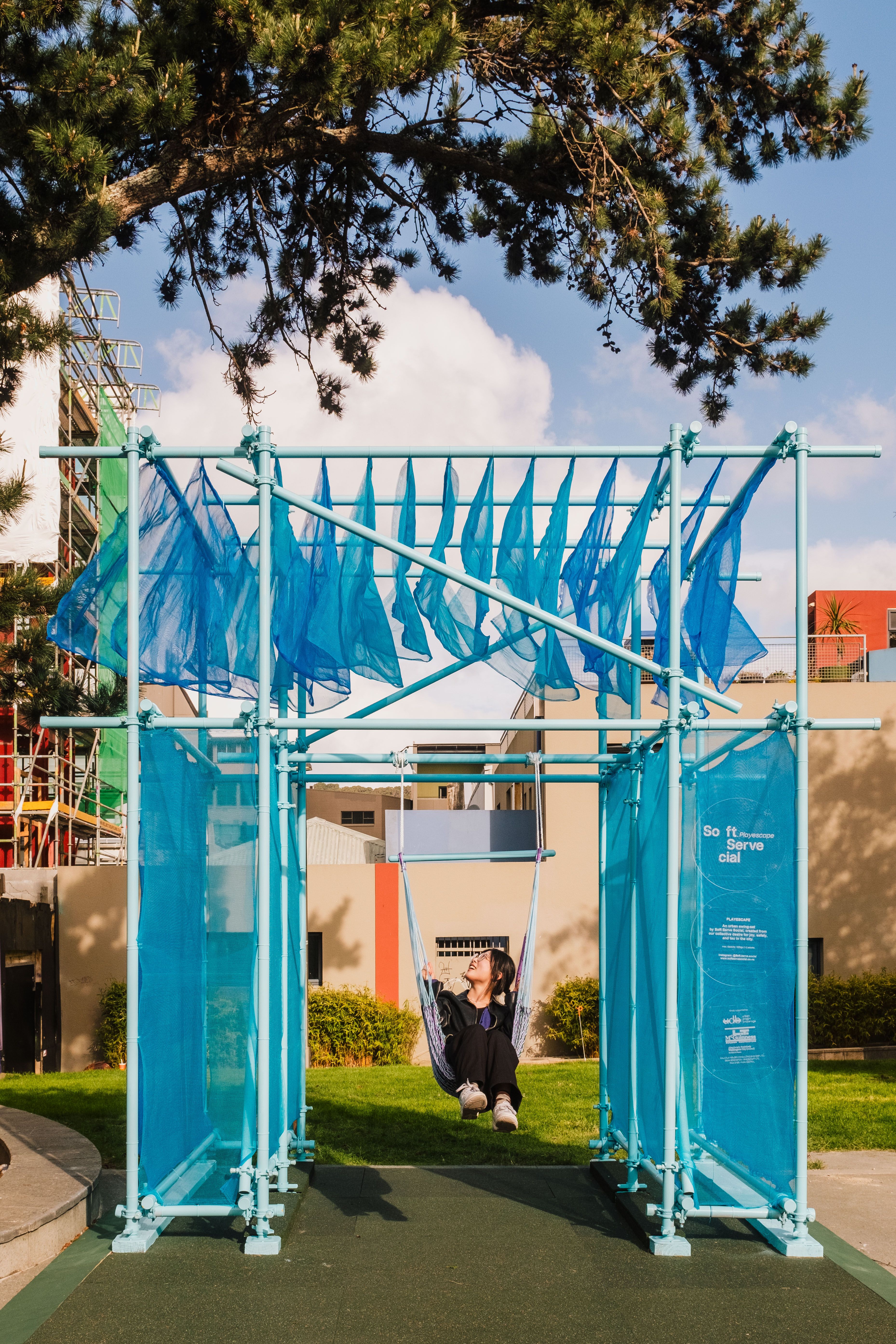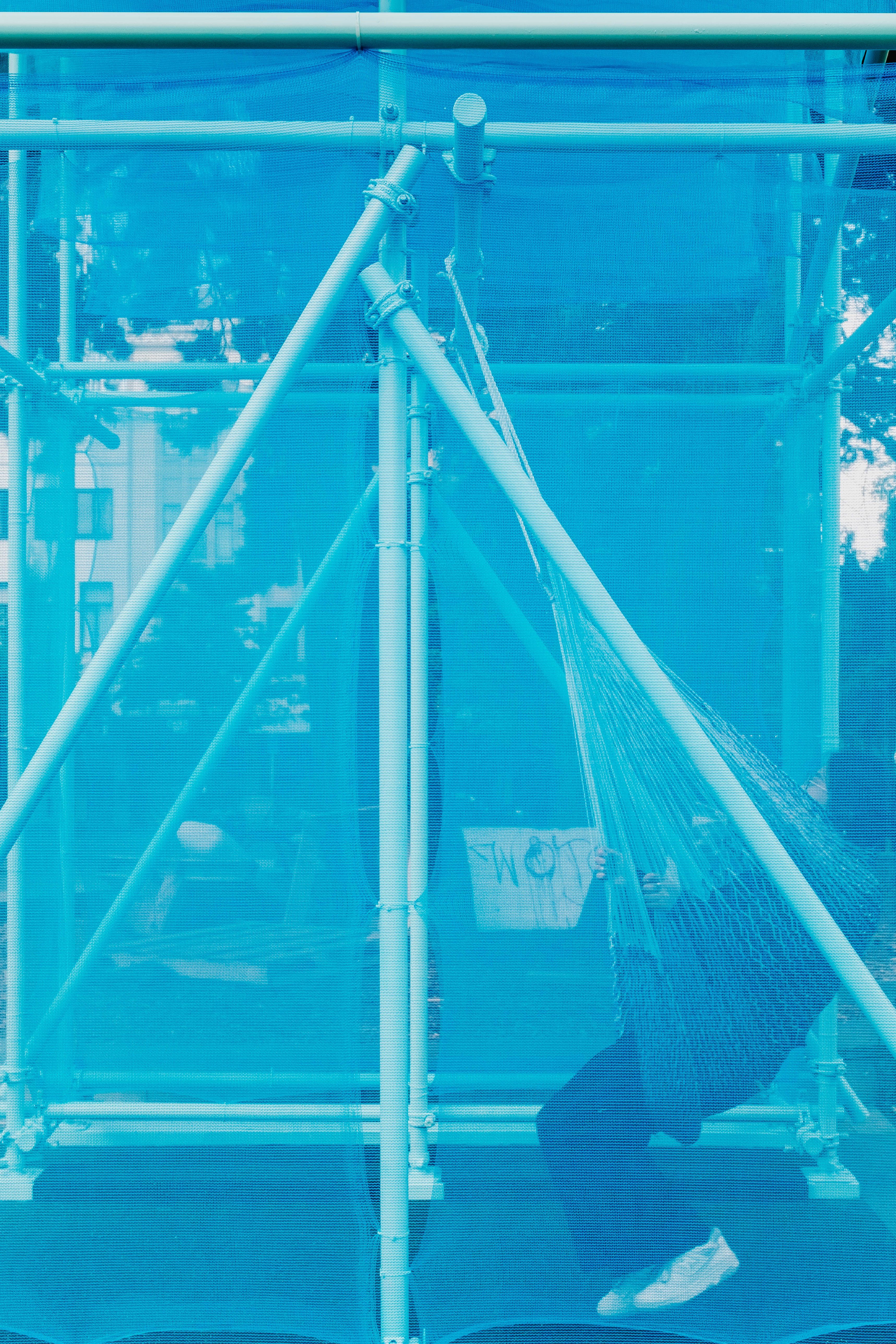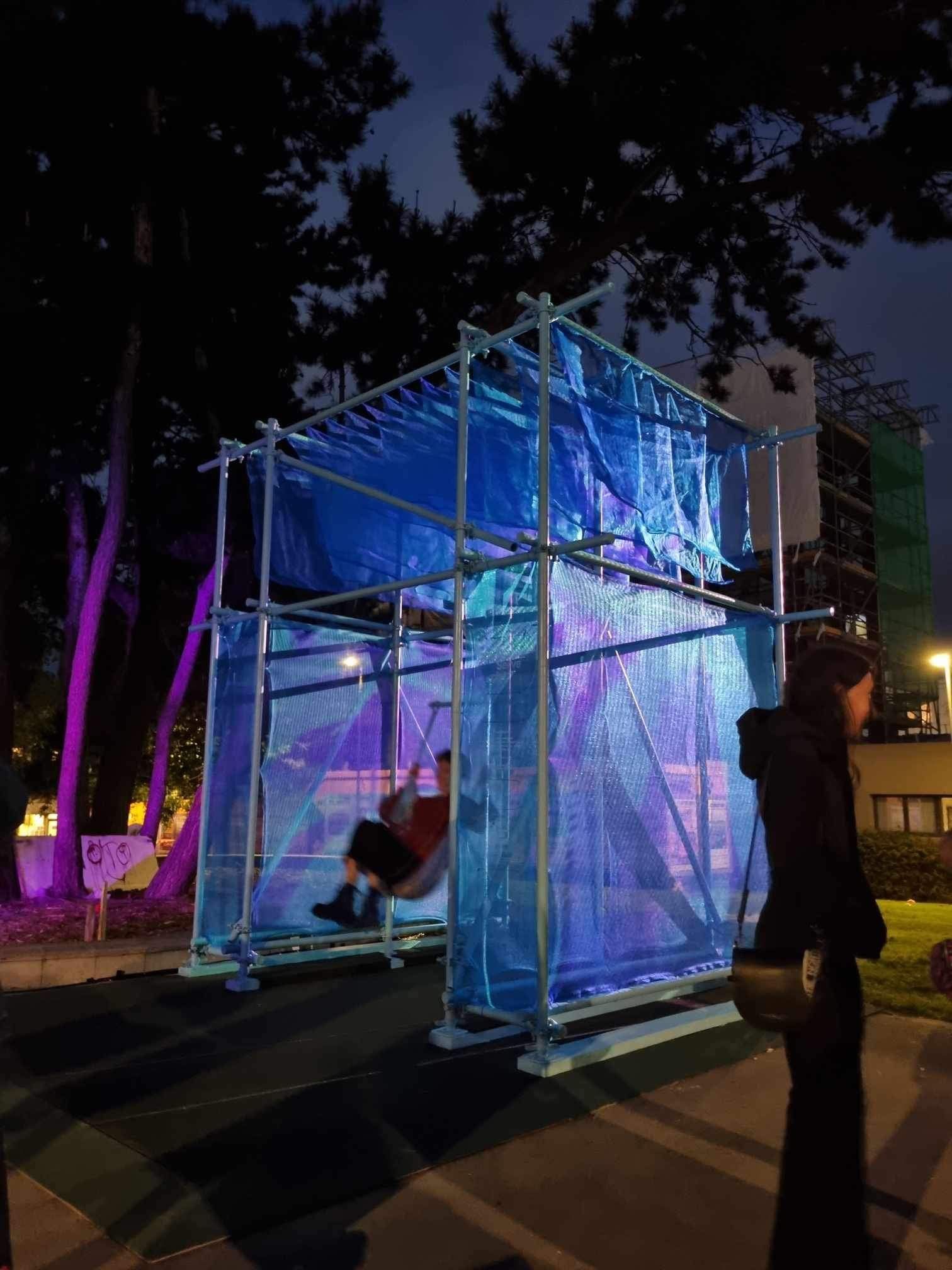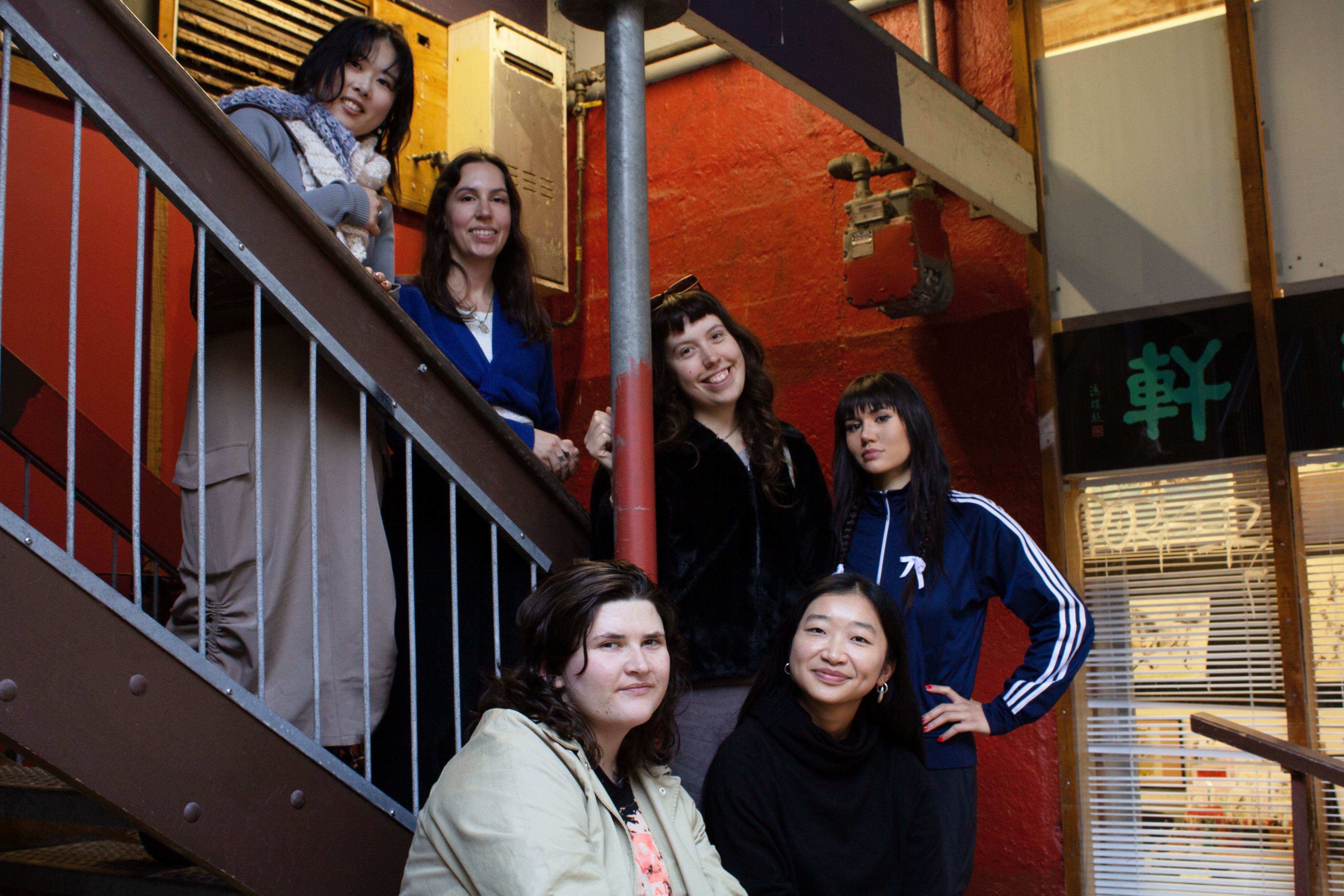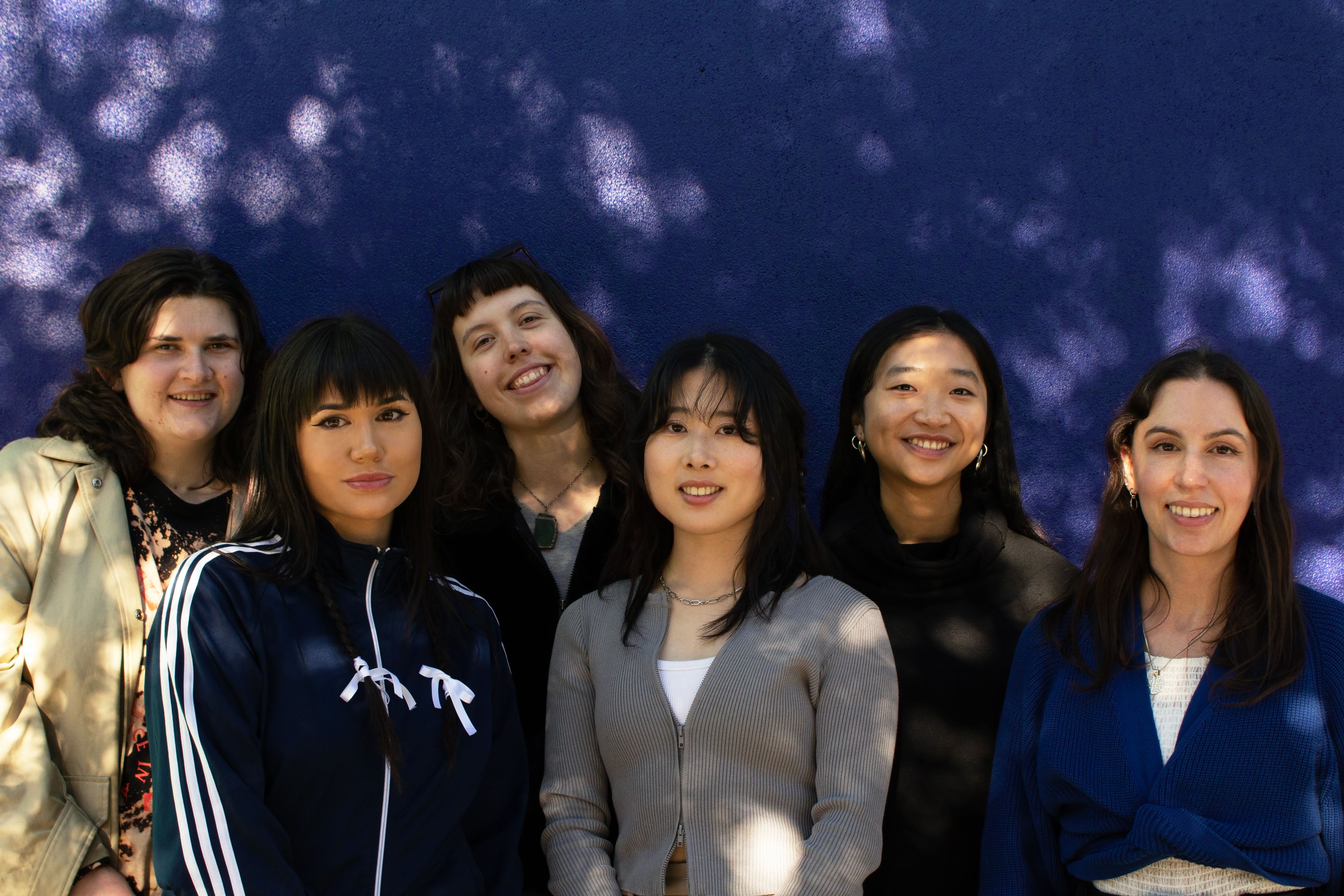Serving Softly
Annie James, Yuri Takemoto and Florence Collins Caballero from Soft Serve Social talk about the urban swingset they’ve created in the heart of Te Whanganui-a-Tara to promote joy and play in the city.
Soft Serve Social is the collective of artists, architects, and designers. We are all connected by our desire to create spaces for comfort, joy and community in the urban environment.
When asked by Urban Dream Brokerage to dream up a scenario which brought life back into central Te Aro, we deliberated on how we all feel as individuals when we experience the city. We knew we wanted to advocate for the enjoyment, freedom and connection to others that can be had in common space.
At our meetings, we acknowledged we don’t always feel safe utilising public spaces - even in the act of sitting. There is always an edge to our existence. We wanted to be able to find space to emotionally regulate. Aside from that, we wanted a place to feel joy and delight. We wanted a place to play and escape. An urban swing-set, illuminated at night with projected video imagery, turned out to be our answer.
The project has encompassed the coordination of many practices, people and values. Not only did we want to make a swing and put it in the city – we also wanted to build it with construction waste or other repurposed materials.
Three members of Soft Serve Social, Annie James, Yuri Takemoto and Florence Collins Caballero, sit down to discuss the experience of dreaming up Playescape. It’s an exemplary Wellington ‘Good Day.’ We’re surrounded by people enjoying each other’s company and sipping pints on the sunny lawn. Nearby, a group of friends sit cross-legged in a circle where, in a few short weeks, our public art swing will be constructed.
Annie James: How did we even land on this site - it’s not the first place we thought to put the swing eh?
Florence Collins Caballero: The whole concept came about because we started with the feelings and the objectives that we wanted to achieve, but then obviously we had to dive into the practical side of how to achieve that in a public space. We explored a few different sites, which were all in public, open spaces and we ended up here in Glover Park. It meant liaising closely with the council and everything, having to go through the proper channels and get permission.
AJ: But the initial call for proposals from Urban Dream Brokerage was to build something along Courtney Place over towards Te Aro Park.
Yuri Takemoto: Yeah, we all discussed together that like, that whole area makes you feel quite stressed and everyone's walking really fast and none of them are smiling. It's all just go, go, go. So I think that was one of our starting points, like, what we need in the city is a feeling of safety and joy.
FCC: I think we found that theme to be common through most of the public spaces – usually we experience them as a thoroughfare. There aren’t often very inviting spaces where you just want to pause and rest. If you're having a busy day, or just need to sit down, you only kind of do those things out of necessity. It's never a very comfortable experience. So, I guess we started thinking about how we could make some kind of installation or space that is an opportunity to just pause and take a moment.
YT: A place to cry has been on my mind this whole time. We need a place to take a step back and feel ourselves again. Like, let ourselves just be.
Photo courtesy of David Hensel Photography
A place to cry has been on my mind this whole time. We need a place to take a step back and feel ourselves again. Like, let ourselves just be.
FCC: I think it's so important. There's so much we miss in our daily lives when we are just all go, go, go. And as soon as you actually sit down and stop, there's so many little moments and things around the city that you just observe and it really lifts your mood. It makes you feel more connected to the city and the community. Just, that space to pause and observe - a mental break.
And the swing's such a good way to experience that. I think Annie came up with that idea initially – you were like, what about a swing? Though, obviously, you know, to sit and stop, the first thing that comes to mind is like a bench. But we thought, how can we make that an even better experience? And I guess then that introduced the element of play.
YT: Yes. Yes. And then we were talking about motion and how being in control is very empowering and you feel physically quite forceful.
AJ: I remember around that time, I had just rewatched Friends and there was that episode where Rachel is scared of letting her daughter use the swings and Ross tries to prove her wrong and then he gets knocked out by a nine year old on a swing when the credits roll.
YT: You don't wanna take anyone out though right ahahah
AJ: I like the feeling of being free and being a force at the same time – you're a force, but you're in control of it. It’s a somatic experience
FCC: The motion is also just a good balance– you get to sit down and relax, but you're still moving. Sometimes sitting down on a bench just completely still makes you feel so strange. Especially in public space. I feel like people will go on their phones because you feel like you always have to be doing something.
AJ: I remember hearing Alex Bonham, who researches play in cities, speak. She was the one who said, honestly, you just need to put a sign up in places that says “you’re allowed to play.” I feel like that is so necessary in cities. If you’re outside -you're supposed to be spending money. In Aotearoa we've obviously got beaches as a communal’ ‘third space’ where everyone does get to play - but these spaces aren’t always going to appear on your daily commute.
FCC: I remember a field trip we had at the park in Roseneath. That was such a fun experience. We were all playing on equipment and seeing how other people were on it as well. I remember when we were over at the slide and there was that lady who was just going for a walk through Roseneath and on her way down the hill, she just came over to the slide and slid down and then continued her walk rather than just walking down the hill - which is so much more fun!
YT: I find playground equipment, especially the swing, is a chance to feel all the senses because the rocking motion emphasises the wind or whatever weather it is. I love the cradling effect that it gives you.
FCC: I guess that was one of the things that helped form our concept and also our name as a collective. It was the idea of comfort, soft materials and soft surfaces and also social infrastructure. Ultimately it was a good thing to help focus our project, because we needed to build a strong and stable structure, but we wanted to have this other layer of softness. We’ve had to try to find a balance, which I think we have gotten in the end.
AJ: Tough on gravity - soft on people.
Photo courtesy of David Hensel Photography
I like the feeling of being free and being a force at the same time – you're a force, but you're in control of it. It's a somatic experience.
YT: We had all these things we wanted to achieve – certain ideas or ways to better the community. But it all really came down to how an individual feels. It was about making us feel happier, safer, and more open to letting kindness like come into our hearts a little bit more by taking a breath.
AJ: Making this happen definitely hasn’t been a straightforward process - did that surprise you guys?
YT: I honestly do think the biggest challenge we had to go through was the compliance side of things. As soon as we decided that we wanted to make a swing in a public space, we had to start engaging so many people and it slowed down the process. This meant making sure it’s all compliant, and then having the site moved around in the planning and compliance process like three times.
AJ: That was obviously such a valuable experience, for us and for Urban Dream Brokerage, seeing as their bread and butter is leasing vacant private commercial space for artists and community activation rather than being so out in the open. There was a whole new set of rules! We've been really lucky to come across different consultants and organisations that are associated with this project, who have been so open in understanding our kaupapa and vision.
FCC: I remember this moment a couple of months ago, we were back at one of those critical points - when we chose materials and we were like, we either need to have our ideal design and it takes as long as it takes, or we choose an ideal date and whatever we have at that date is what we work with. We chose the date because I mean, a large part was just our own capacity, you know? We’re doing this pretty much in our evenings and weekends outside of our regular jobs.
AJ: I was actually surprised at how systematic we needed to be in the end.
Photo supplied by Soft Serve Social
We've always talked about how hopefully we can help inspire other people to do similar kinds of projects and we can be a resource people can refer to.
FCC: There’s been so many different moving parts to organise with external people. And then that all has to be communicated within our group. Between the six of us. Making sure everyone's on the same page and up to date. And there's all the practical side, but then obviously the artistic side. We have to have a shared vision and come to a consensus on a lot of things. So that all takes time and energy.
YT: We don't have time sheets. We don't have any obligation or system to make us all work equally. We had to be quite organic about it. Whoever that has time has to do whatever, or people who don't have time will have to make time.
FCC: Like we've all said, we've learned so much from this and if we were to do a project again, we've learned what's needed from a practical point of view, but also I think we all know how we would probably manage our time and expectations and work together better to just make it easier on each other.
AJ: It took me some time to accept what needed to happen, to move away from what was ideal in my head because I also care so much about the experience and making it happen. That's something I've always grappled with.
FCC: It's been such a rewarding experience. I mean exhausting, but also rewarding in that we are driving this. We’ve had to work with the council and other people and get their approvals, but at the end of the day, this is our idea. We decided to do this. We've determined how the design will look and all of that kind of thing. So it's very rewarding to actually be able to pull that off and move out of just dreaming about the ideals.
YT: Something we kept talking about was the modular and mobile nature of our project. It could almost be a prototype. If we did have the energy and time later down in the track, we could potentially build on the experience. We also don't want it to just happen and then it's over. We've always talked about how hopefully we can help inspire other people to do similar kinds of projects and we can be a resource people can refer to. We want to grow from that so that we, and other people, aren't just starting from scratch every time they want to do something innovative and fun in the city.
Playescape was commissioned by Urban Dream Brokerage and Wellington City Council as part of the Let’s get Wellington Dreaming programme. The urban swing set has been made from construction waste and reusable materials, supplied by LT McGuinness.
The swing will be in Glover Park, Ghuznee Street between 11-26 November. The space will also be activated throughout its duration with encouraging kōrero around different social aspects of the installation.
Activation details and updates will be communicated via Soft Serve Social (Instagram and website)

